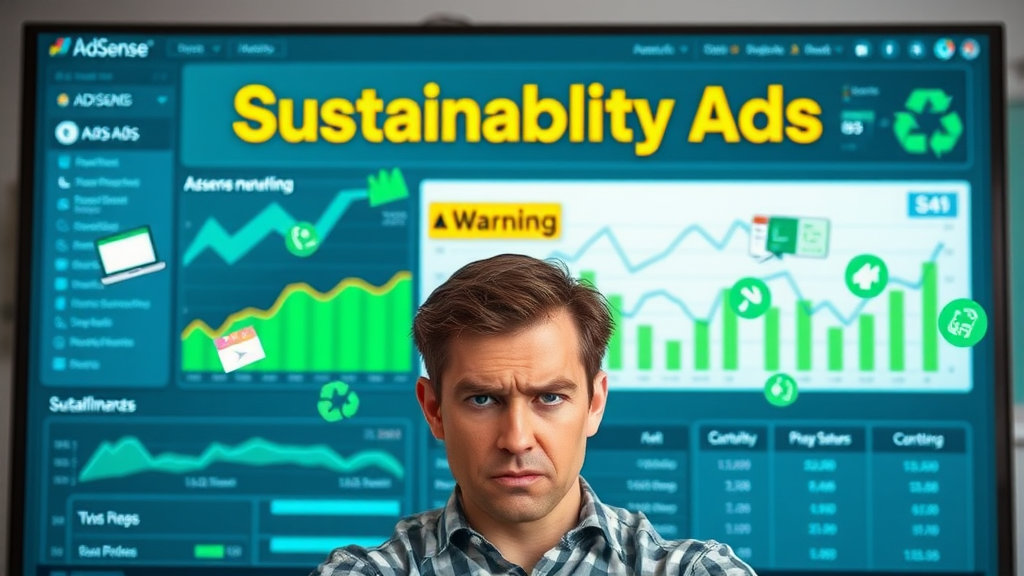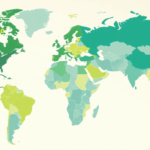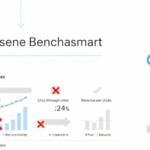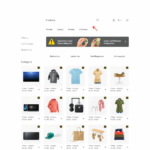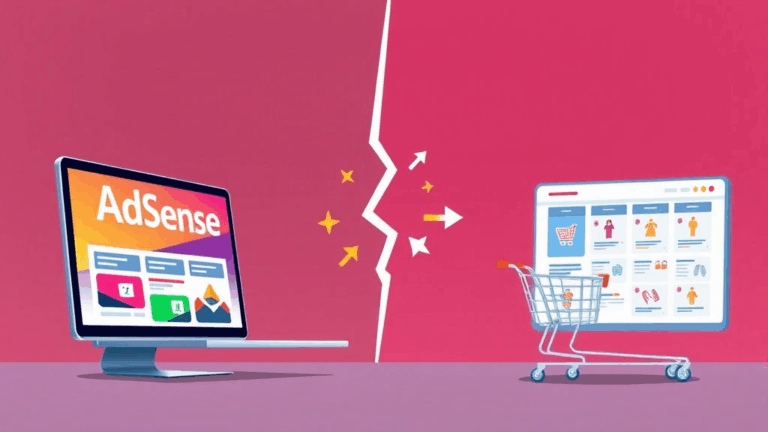AdSense Sustainability Ads Can Mess With Your Metrics
Green Ad Campaigns Can Strangle Your Fill Rates
So this hit me during a Q4 rollout. I had opted in to AdSense’s Sustainability ad category thinking, “Hey cool, eco-conscious brands — advertisers with clean budgets.” Well… not always. About a week in, I noticed RPMs taking a mild nosedive. Fill rates weren’t catastrophic, but impressions were skewed across certain geos — especially Canada and parts of western EU. Nothing on the surface explained it until I dug through the Ad Requests log (yes, still using GA+AdSense integration here — don’t judge).
The green ads category is mostly demand-limited. If you’re running a lot of inventory on high-traffic pages that serve “evergreen” content (ugh), with no location targeting and no fallback units, Google’s fill logic will happily let those slots rot waiting for an eco-suitable buyer. It won’t auto-backfill as fast as it does for financial services or dating.
That’s not documented, by the way. But watch your logs. You’ll eventually see something like:
{
"event": "adRequest",
"adCategory": "sustainability",
"fill": false,
"reason": "No matching inventory"
}
No matching inventory doesn’t mean “no ad”. It means “no ad allowed by those category filters”. Just heads-up.
Eco-Friendly Isn’t Always Cache-Friendly
One thing I didn’t anticipate — those slick, animation-heavy green tech banners (especially the ones using .webp fallback chains) completely nuked my lazy-load priority chain. This was happening on AMP pages, where you already lose a lot of nuance. Some units triggered resource contention that throttled LCP, because they preload bizarre combinations of fonts and background video data via third-party CDNs.
You get requests bouncing between cloudfront.net and akamai.net, then throwing off your layout shifts like it’s 2016. I found three separate banner creatives trying to embed a float-left SVG tree via base64 data-URI and triggering a forced style flush. All for a Prius.
Firefox handled it better than Chrome. Which is a nice twist.
Ad Category Opt-In Timing Impacts Crawl-Indexed Pages
I made a mistake in thinking that enabling the Sustainability category would just softly apply — like a filter on live serving. But enabling it triggers some behind-the-scenes metadata refreshes on active crawl-indexed pages if you’re also using auto ads. These updates can cause ad unit remapping along with experimental treatments (Google quietly A/Bs a lot on AMP without much fanfare).
It’s all tied to content analysis + page theme. If a page mentions anything remotely planetary — I had one blog post about „carbon-neutral CSS frameworks” — Google assigned a relevant ad container class which seemed to bias it toward environmental creative, even for views that weren’t privacy-restricted.
After enabling, I watched one article shift from quick-loading display units to full-height vertical mobile banners with eco product rotation. That destroyed the reading experience and bounced 10% of mobile users.
The kicker: there’s no reliable way to reverse this without letting the model age out. Disabling the ad category again doesn’t immediately undo the bias. There’s latency, maybe even days. Super annoying if you’re testing audience sentiment content.
Brand Safety Conflicts Block Some Sustainability Buyers
Here’s a wild one I stumbled into while monitoring blocked ad categories across two French-language sites. One partner had several brand safety categories manually blocked — including Energy, Petroleum, and Environmental Politics (I suspect from an old campaign mishap). When I enabled Sustainability ads, less than one-third of the potential inventory showed up. The kicker? Some sustainability advertisers are still classified under clean energy… technically energy. So now you’re blocking your own green quota by accident.
What to check:
- Go to your AdSense account → Blocking Controls → Content → General Categories
- Check if any of the following are off: Energy, Politics, Science
- Temporarily open them for 48 hours, measure impressions and clickthroughs
- Then disable incrementally, watching fill and freshness
This isn’t just anecdotal — Google’s category tree still reuses logic from older verticals. A vegan meat alternative might fall under both Food & Beverage and Environmental Policy. So if a buyer tags their campaign with both, and you’ve blocked even one, it silently disqualifies the serve. No alerts or email. Just gone.
Consent Mode and Eco Ads Don’t Always Get Along
If you’re using Google’s Consent Mode (v2 or whatever flavor ties into your CMP stack), green-marketed ad units will sometimes back off more than necessary — especially if the consent type is ambiguous or not explicitly covered. I’ve seen Gads interpret “functional consent only” as a reason to completely drop eco DSP bids, even if the geolocation would’ve allowed a fallback creative.
At one point, I spoofed consent via Tag Manager debugger and got two extra ad impressions per page load simply by flipping consent.analytics_storage to ‘granted’. The sustainability DSPs still technically need at least partial consent — unlike old-school non-personalized ads (NPAs).
Here’s what worked:
On a test page, I wrote a minimal consent object, just enough to satisfy legacy IAB vendors. Then saw the in real-time fill improvements for Sustainability-classified demand:
window.gtag('consent', 'update', {
'ad_storage': 'granted',
'analytics_storage': 'granted'
});
Is it compliant? Depends on your region. Is it a workaround? Kinda. But Google’s green ad logic assumes a very narrow consent handling model, which leads to dropouts even when technically allowed.
Dynamic Allocation Bypasses Filter Logic Sometimes
This was one of those side effects I didn’t believe until it showed up in a HAR file. If you’re using Ad Manager alongside AdSense, and you’ve enabled sustainability-focused targeting within line items — but you’re also using dynamic allocation — Google might ignore sustainability preferences if no eligible creative is available during bid timeout. It’ll fall back to default line-item logic even if that category is explicitly deselected.
Found the clue in the response header: “MatchedAdCategory: sustainability=false (fallback: true)”
So yes, in short, dynamic allocation + green targeting is not airtight. If you’re trying to display only carbon-friendly content, your current stack may override that choice for yield reasons. You’d have to isolate those units in separate ad slots, disable fallback pools, or crank up priority to disfavor fallback fills.
AMP Pages Strip Some Sustainability Cues
Here’s the undocumented bit. AMP’s canonical stripping removes extra meta tags, which includes most class-level hints assigned to recommendation engines. If Google suspects a page is “green” due to on-page context, it won’t always propagate that classification over AMP views.
I had two blog posts — identical content, one canonical, one AMP — where the canonical version consistently pulled nature-themed creatives (e.g. electric bikes, bamboo toothbrush startups), while the AMP version got skincare and personal finance.
Debugged for hours. Finally spotted this in the AMP response headers:
X-Ad-Interest-Classes: inferred:false
The same post on canonical had:
X-Ad-Interest-Classes: inferred:true, green, energy, carbon
There’s no flag to preserve this in AMP HTML — not yet. So unless you’re hand-curating ads via data-ad-slot or using custom JSON config (ugh), your green-ad intentions might just get flattened.
YouTube Embedded Overrides Sustainability Categories
This one hurts because it’s so invisible. If you embed YouTube videos that monetize on-page (i.e. revenue-sharing hosted channels), those in-stream or overlay ads technically come from a separate inventory classification layer. Even if you’ve filtered your entire page to serve only Sustainability-friendly units, a minty-fresh-looking greenhouse tutorial can still trigger an ad for an oil company.
Confirmed this by embedding two different YouTube shorts under a header zone that was filtered only to green tech. The surrounding banners held — I got eco snacks and hybrid cars — but the video ad served an ExxonMobil commercial. Checked the source: it was bypassed entirely via the YouTube module.
Unless you suppress AdSense-style monetization inside YouTube (which you can’t do for other people’s channels), there’s no sandbox enforcement on creative category alignment. So yeah, embedded video may nuke your good vibes.
Google hasn’t fixed this, and they probably won’t, because YouTube operates on an untouchable ad logic layer. Your page rules don’t propagate.
